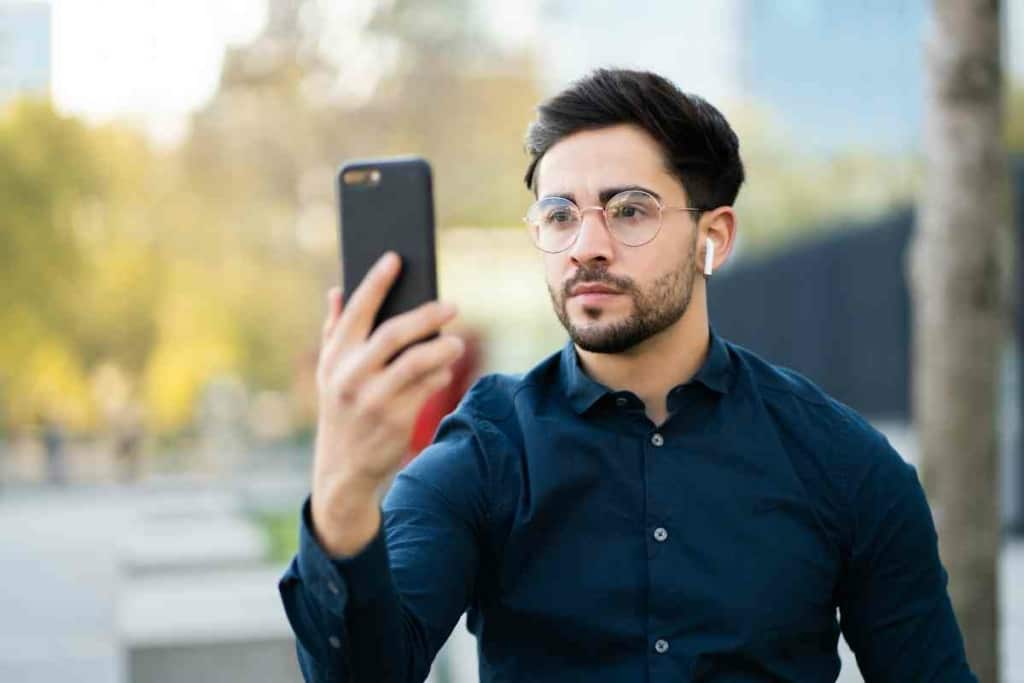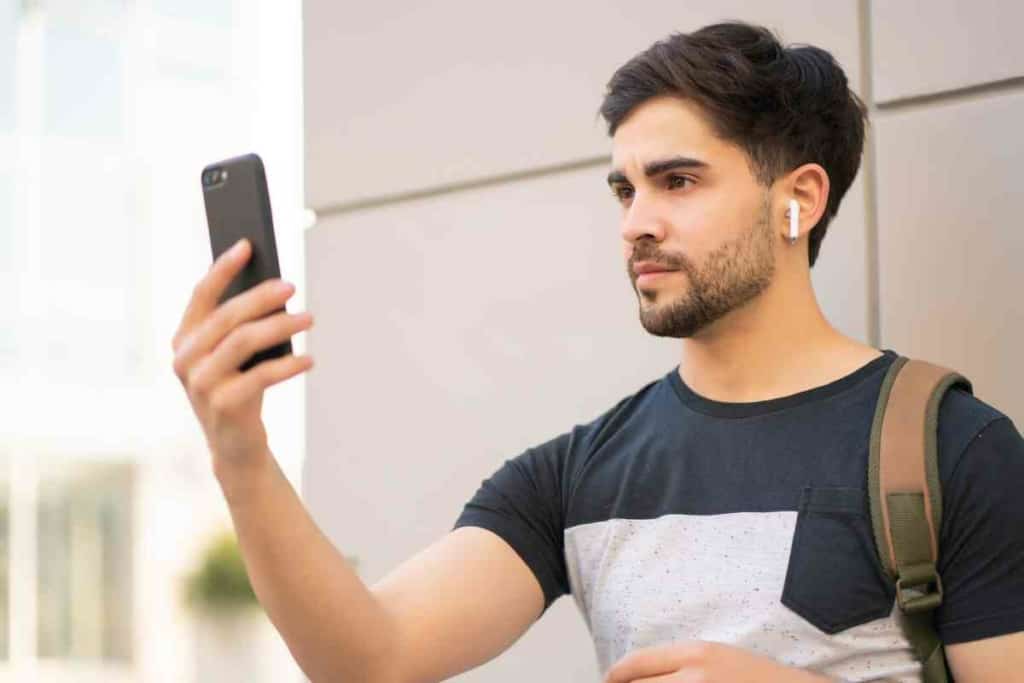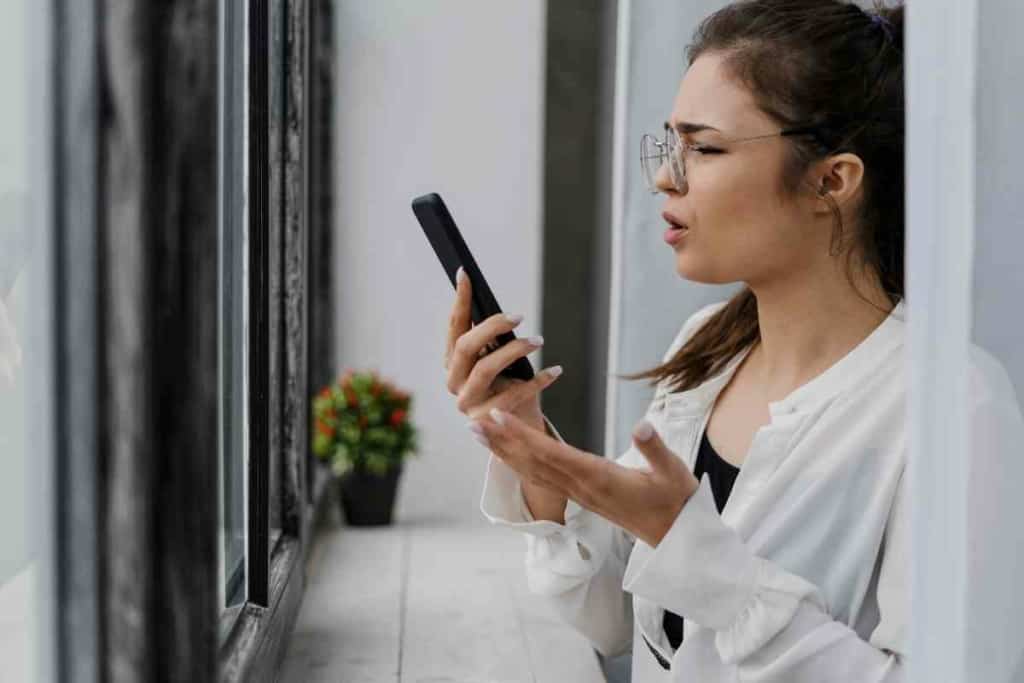3 Reasons Why Your iPhone Is Unlocking Without Face ID
Setting up security measures on your iPhone is essential to protect the device and your data, but why is it unlocking without Face ID?

Why is my iPhone unlocking without Face ID?
Your iPhone is likely unlocking without Face ID due to the device’s Attention Settings being switched off. You can fix this issue by accessing your iPhone’s Attention Settings and turning them on, which will require direct authorization each time you want to access the device.
After extensively researching iPhone troubleshooting forums, I have gathered enough information to determine why an iPhone can unlock without Face ID. My research has indicated that unless it’s related to a software or hardware issue, your iPhone is probably unlocking itself due to the device’s settings needing to be adjusted.
What is iPhone Face ID?

Buying a new iPhone can easily cost over a thousand dollars, which is why Apple designs its products with a variety of security features.
One of the most advanced security options on an iPhone is Face ID. When Apple launched the iPhone X in 2017, a key feature of the device was that you could unlock the phone using just your face.
This is an intuitive and secure way to authenticate your identity so that you can access your iPhone without having to lift a finger. Apple uses its TrueDepth camera system to scan the geometry of your face, which will unlock your iPhone just by glancing at it.
How to Set Up Face ID on an iPhone
The technology behind smartphones continues to get more advanced each year, and Apple’s Face ID system is a testament to that.
Since Face ID was introduced to iPhones, this has been one of the most popular methods people utilize to access their devices.
However, Face ID needs to be set up before it can be used. This feature requires you to scan your face so that your iPhone’s TrueDepth camera system recognizes you when you glance at the device.
Before you begin the setup process, make sure that there is nothing obscuring your face.
The Face ID system needs a clean shot of your face, which means that you should remove glasses, hats, facemasks, or anything that may interfere with the scan.
To get an accurate scan, I recommend keeping your iPhone roughly 10 to 20 inches away from your face.

Follow these steps to set up Face ID on your iPhone:
- Go to your iPhone’s Settings
- Select Face ID & Passcode
- Enter your iPhone’s Passcode
- Select Set Up Face ID
- Position your iPhone in front of your face (10 to 20 inches away)
- Select Get Started
- Position your face/head inside the circle on the display
- Wait for the Face ID scan to finish
- Select Continue
- Select Done
Reasons Your iPhone Unlocks Without Face ID
Apple’s security features are state-of-the-art, and its Face ID system works seamlessly for virtually all users.
With that said, there have been a number of reports from iPhone customers claiming that their device is unlocking itself without Face ID.
This is a concern for a lot of people given that smartphone devices hold a lot of sensitive data that needs to be secured, such as banking details, private emails, and login information. If your iPhone is legitimately unlocking itself without Face ID, this can potentially expose your data if your device were to get into the wrong hands.
Before you panic, you should keep in mind that there are a number of different factors that can cause your iPhone to unlock without Face ID, and they are usually not problematic or difficult to resolve.
1. Face ID Attention Settings
Apple believes that accessing your iPhone should be quick, efficient, and secure, which is why you can modify the Attention Settings of your device’s Face ID.
The most common reason most people assume their iPhone is unlocking itself without Face ID is that the ‘Requires Attention’ setting is disabled.
Your iPhone’s TrueDepth camera system is so advanced that it will actually scan your face and activate Face ID if you are remotely near the device.
This means that if you so much as glance at your iPhone, the device will likely unlock itself so that you can start using it without having to actually go through an unlock process.
It can be very easy to assume that your iPhone is experiencing some sort of malfunction in this situation and is unlocking itself without scanning your face.
So, if you are worried about your iPhone’s Face ID security system, odds are it is nothing serious and simply due to the attention settings.

How to Change Face ID Attention Settings
Whether you value heightened security or simply don’t like the idea of your iPhone unlocking itself without direct authorization, you can change your device’s Face ID Attention Settings.
As a standard, Face ID is programmed to scan your face for attention so that it knows to unlock itself. You may have the attention awareness feature deactivated on the device which will prompt your iPhone to unlock itself if it scans your face, regardless of whether you are using it.
While this may be a convenient feature that many people value, it is not ideal for all iPhone users.
You can change this feature in your iPhone’s Attention Settings by following these steps:
- Go to your iPhone’s Settings
- Select Face ID & Passcode
- Turn On/Off Requires Attention for Face ID
If you only want your iPhone to unlock with Face ID after directly authorizing, then you should keep the device’s Attention Settings in the ‘On’ position.
2. Alternative Unlocking Methods
Just because you’ve set up Face ID on your iPhone does not mean that you can’t use alternative unlocking methods to access your device.
Apple allows you to set up various unlock methods such as:
- Passcode
- Touch ID
Some iPhone users are under the impression that once Face ID is set up, it is the only way to access the device.
You can unlock your iPhone using any of the security access methods on your device – with a passcode being one of the requirements to set up Face ID.
3. Software or Hardware-Related Issues
If your iPhone is unlocking without Face ID, it’s most likely due to the Attention Settings being switched off.
However, there have been some rare cases of iPhone users experiencing their devices unlocking completely on their own.
This can be particularly problematic if the device is unlocking itself without Face ID when you are not even in the room.
With that said, if you are experiencing this issue, it is likely due to a serious bug in the software or a hardware-related issue.
I recommend that you keep your phone as secure as possible until you can get it professionally checked out.
You should report the issue to Apple immediately and schedule an appointment at the Genius Bar or at a certified Apple repair shop.
Why is Face ID Not Working on my iPhone?
Apple’s Face ID system is incredibly advanced, but that does not mean that it always works like its supposed to. Many users have experienced issues with Face ID denying them access or failing to recognize their face.
Troubleshooting your iPhone’s Face ID should not be very difficult and it’s usually connected to a minor bug or some kind of physical interference.
If you are having issues getting your iPhone’s Face ID to work, consider one of the following options:
- Restart your iPhone
- Check for updates
- Check that your face is not blocked
- Check that the iPhone camera is not blocked
- Remove any glasses, hats, or other accessories
- Check Face ID settings
- Reset Face ID
If you’ve tried each method and are still having trouble with Face ID, you should report the issue to Apple to have your iPhone serviced.
Do All iPhones Have Face ID?
Face ID is one of Apple’s newest security features, which is why you can only use this method to access your device if it was made after 2017.
Apple launched Face ID with the release of the iPhone X – with all later models featuring Face ID as a standard unlock method.
If you are unsure if your device has Face ID, you can check this by accessing your iPhone’s settings or by reviewing the product manual.
However, a quick way to confirm this is to simply see if your iPhone has a home button.
All of Apple’s latest iPhones that have Face ID do not come equipped with a home button. So, if your iPhone was made after 2017 and it does not have a home button, then Face ID should be available on the device.
Do iPhones Require a Passcode to Set Up Face ID?
Yes, a passcode is required to set up Face ID on an iPhone. When you unbox your iPhone and go through the setup process, you will be prompted to create a passcode that you must enter each time you want to use the device.
Although you can technically disable this feature afterward, a passcode will be required when setting up Face ID.
Do iPhones Require Two-Factor Authentication?
Cyber security threats are on the rise, and there has never been a more important time to protect your data and your device.
Many online applications, particularly those connected to financial institutions, require two-factor authentication when signing in.
Although Apple has made two-factor authentication a requirement for some accessibility features such as online payments, this is not mandatory on an iPhone. When you set up Face ID for the first time, you will be prompted to enter a passcode for the device.
Once your Face ID and passcode are created, you can choose either method when unlocking your iPhone. This does not imply that both methods will be required for two-factor authentication.
With that said, setting up two-factor authentication for your Apple ID is highly recommended to reduce cyber security threats
You can set up two-factor authentication on an iPhone by following these steps:
- Go to Settings
- Select (your name)
- Select Password and Security
- Select Turn On Two-Factor Authentication
- Select Continue
After you select ‘Continue’, you will be prompted with several options for creating a two-factor authentication system.
Key Takeaways
- Your iPhone is likely unlocking without Face ID due to the device’s Attention Settings being switched off.
- You can fix this issue by accessing your iPhone’s Attention Settings and turning them on, which will require direct authorization each time you want to access the device.
- Face ID is available on select iPhone models made after 2017.